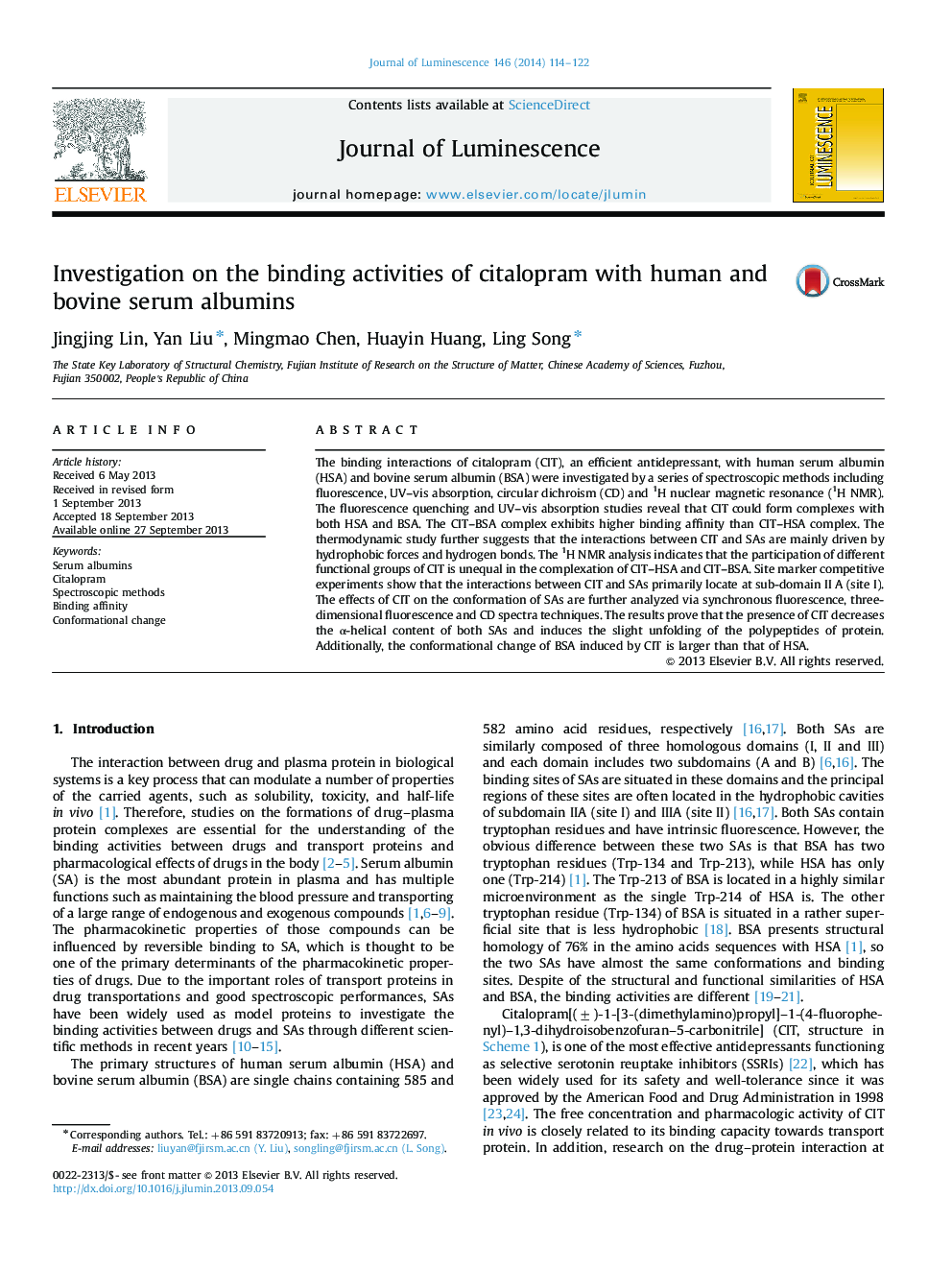| Article ID | Journal | Published Year | Pages | File Type |
|---|---|---|---|---|
| 5400314 | Journal of Luminescence | 2014 | 9 Pages |
Abstract
The binding interactions of citalopram (CIT), an efficient antidepressant, with human serum albumin (HSA) and bovine serum albumin (BSA) were investigated by a series of spectroscopic methods including fluorescence, UV-vis absorption, circular dichroism (CD) and 1H nuclear magnetic resonance (1H NMR). The fluorescence quenching and UV-vis absorption studies reveal that CIT could form complexes with both HSA and BSA. The CIT-BSA complex exhibits higher binding affinity than CIT-HSA complex. The thermodynamic study further suggests that the interactions between CIT and SAs are mainly driven by hydrophobic forces and hydrogen bonds. The 1H NMR analysis indicates that the participation of different functional groups of CIT is unequal in the complexation of CIT-HSA and CIT-BSA. Site marker competitive experiments show that the interactions between CIT and SAs primarily locate at sub-domain II A (site I). The effects of CIT on the conformation of SAs are further analyzed via synchronous fluorescence, three-dimensional fluorescence and CD spectra techniques. The results prove that the presence of CIT decreases the α-helical content of both SAs and induces the slight unfolding of the polypeptides of protein. Additionally, the conformational change of BSA induced by CIT is larger than that of HSA.
Related Topics
Physical Sciences and Engineering
Chemistry
Physical and Theoretical Chemistry
Authors
Jingjing Lin, Yan Liu, Mingmao Chen, Huayin Huang, Ling Song,
